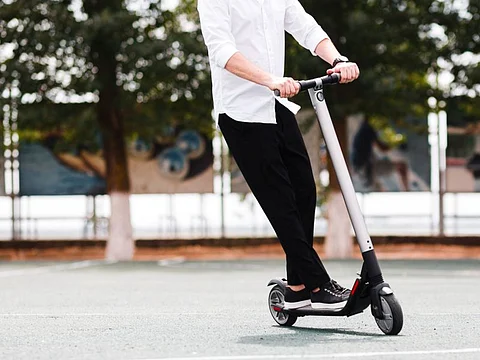FRIDAY, Jan. 25, 2019 (HealthDay News) -- Rented electric scooters have become all the rage in getting around cities, but they are also accidents waiting to happen, a new study reveals.
In two Southern California emergency departments, nearly 250 people were seen for injuries linked to electric scooters in a single year, researchers found.
"Riders of electric scooters share roads with fast-moving vehicular traffic and share sidewalks with lots of pedestrian traffic and uneven curbs, and riders seem to underestimate hazards," said senior study author Dr. Joann Elmore. She's a professor of medicine at UCLA's David Geffen School of Medicine.
Injuries associated with these electric scooters are a new phenomenon, she noted. "While the injuries vary in severity, some are serious, including fractures and head injuries," Elmore said.
These data are likely a conservative estimate because the researchers only included patients seen in emergency rooms. "Our findings do not cover the many patients seen in our outpatient clinics," Elmore added.
"Electric scooters are an innovative and inexpensive method of transportation for short distances," she pointed out.
The companies offering these electric scooters are rapidly expanding in the United States and internationally. "This is now a billion dollar market, with ride-sharing companies like Uber and Lyft recently entering the market," Elmore explained.
In addition, companies such as Bird, Lime and Skip have set up standup scooter rentals in many parts of the country, which has resulted in some controversy over regulations for these modes of transportation.
For the study, Elmore and her colleagues used medical records from University of California, Los Angeles-affiliated hospital emergency departments to look at accidents associated with standup electric scooters over one year. In all, 228 patients were injured as riders and 21 as non-riders.
Nearly 11 percent of injured riders were under 18, and only about 4 percent wore helmets, the investigators found.
The most common injuries were fractures, head injuries and soft-tissue injuries. Most patients were discharged from the emergency department, but 15 were admitted to the hospital, including two with severe head injuries.
Most patients had scans of their arms or legs, and 8 percent had CT scans of the head, cervical spine, chest, abdomen and pelvis -- an indication of serious injury.
Among all the patients, 32 percent had fractures and 40 percent had head injuries, the findings showed.
Most injuries were from falls (80 percent), collisions with objects (11 percent) or being struck by a car or object (9 percent). Among all the patients, 5 percent had blood alcohol levels that showed they were intoxicated, the researchers found.
To cut down on severe injuries, Elmore encourages riders to "be careful, follow local traffic laws, and wear helmets."
Dr. Frederick Rivara, a professor of pediatrics at the University of Washington in Seattle, wrote an editorial accompanying the study. He said, "I, and a lot of people, have spent time trying to increase helmet use on regular bikes."
When it comes to electric scooters, most people don't wear helmets, he added. "I understand why, because most people don't carry a helmet with them," Rivara said.
But wearing a helmet can prevent a lot of serious injury. Rivara thinks that the cities that allow these scooters and the companies that rent them should have some provisions to ensure that renters wear helmets.
Although not many head injuries from electric scooters have been seen yet, as their use increases, more injuries are likely to follow, Rivara warned.
These scooters can travel relatively fast, some nearly 40 miles per hour, increasing the odds for an accident and injury, he explained. For comparison, two-thirds of the hospitalizations and three-quarters of the deaths from bicycle accidents are from head injuries.
"People who rent these scooters regularly ought to carry a helmet," Rivara said. "In addition, cities that allow these things ought to partner with the companies to try to solve the problem of how to provide helmets for the riders -- with these things being motorized, there's a real need to address this problem."
The report was published online Jan. 25 in JAMA Network Open.
More information
For more on electric scooter safety, visit the Cedars Sinai Medical Center.



